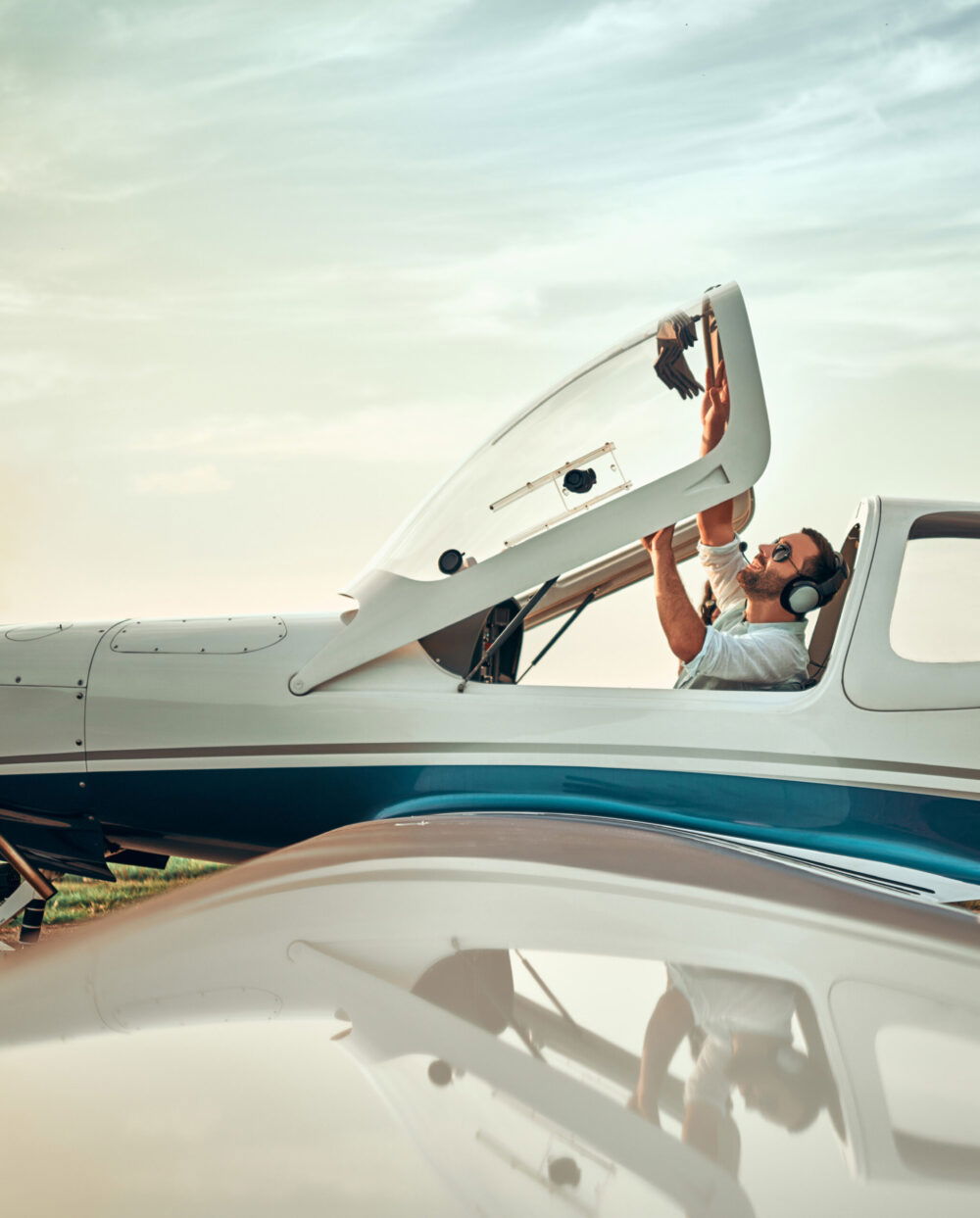With a side-to-side sashay of the panel as the Jake turns over and comes to life, so does the Cessna 195. The conveyance of choice for legendary Cessna Aircraft Company president Dwane Wallace back in the 1950s, the 195 lives on through a persistent confluence of capability and flair, with a tinge of nostalgia thrown in. And throughout 2022, its aficionados have celebrated the 75 years since it first took flight in Wichita, Kansas.
Design
The Cessna 190 and 195 models were born from a desire to serve the business traveler of the post-World War II era with a moderately fast single that could take advantage of the state-of-the-art radial engines of the time—and carry a family or a couple of colleagues in comfort in a sedan-like cabin. The models were launched concurrently and shared a production line, but the 190s were produced with a 240 hp, seven-cylinder Continental W670-23, while the 195s came out of the factory with the 300 hp Jacobs R755-A2—and later the 275 hp Jacobs R755-B2—making use of war-surplus Jakes the company could readily obtain.
If you're not already a subscriber, what are you waiting for? Subscribe today to get the issue as soon as it is released in either Print or Digital formats.
Subscribe NowTrue to an engineering choice that courses through most Cessna high-wing designs, the 190/195 series used an unmodified 2412 airfoil from root to tip like its progenitor, the Cessna C-37 Airmaster, whereas other models born a few years later (like the 172, 182, and 206) used a modification on the base airfoil at the tip—a “camber cuff”—added to mimic the effects of a popular STOL mod in the 1970s.
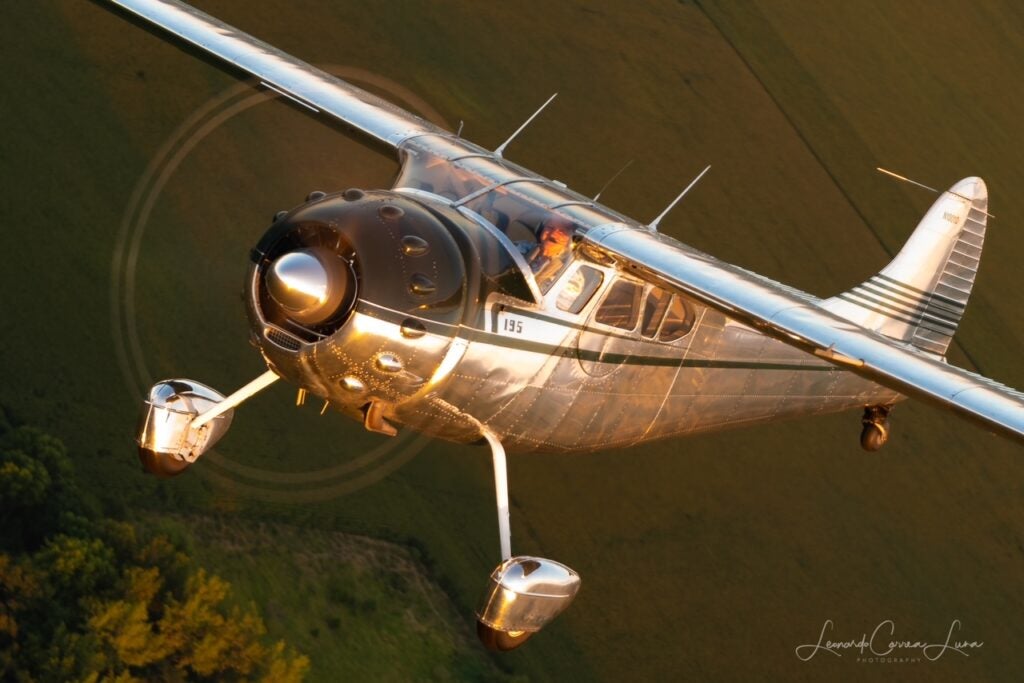
I asked retired Cessna engineer Neal Willford about the general thinking behind the combination of airfoil, wing position, and other design elements. “A high wing’s stability tends to improve a bit at slow speeds (higher lift coefficients), resulting in ‘heavier’ stick forces,” Willford says. “Wing planform, twist, and airfoils used at the root and tip also can affect the airplane’s characteristics. The 195’s wing taper means that it would tend to stall more outboard than a ‘Hershey bar’ wing.” The bit of forward sweep also helps that wing to stall at the root, but the 195’s engineers likely added the sweep to improve balance and visibility.
Jack Pelton, president and CEO of the Experimental Aircraft Association (EAA) and former head of Cessna Aircraft Company, purchased Dwane Wallace’s personal 1954 195B in 2006, and it keeps a special place in his heart and hangar, owing to the marriage of style and performance that it represents. “Today, I really miss that new aircraft design is really focused on performance with very few airframe styles being produced,” as Pelton recently shared with me. “I miss the style and romance of all the vintage varieties that existed back in the day. It really comes to light when you walk the rows in vintage area during AirVenture.
“The 195 was that plane that held to an Art Deco appeal, while trying to push the performance too against the ‘new kid’ [Beechcraft] Bonanza. Cessna [did] it, taking advantage of the surplus of radials post-war that were available. Of course, being ‘strut less’…I blush when I say it, but think of the picture of Cessna employees standing on the Airmaster wing showing how strong it was.” The 195 continued that heritage of overbuilt strength.
Model History
The first 195, NC41690, went up for its initial production test flight at the hands of legendary Cessna flight test pilot Mort Brown on July 15, 1947. Brown made his acquaintance with the design starting with the prototype 190 model in 1944. The production line cranked out 190s and 195s from 1947 to 1954, when Cessna essentially ran out of surplus engines. A military version, the LC-126, served in liaison and observation roles, coming with the 300 hp engine. Overall, roughly 1,200 examples of the three primary variations were built.
While most use the Hamilton-Standard 2B20 constant-speed prop, other Jacobs engine options followed for the model, including the 275 hp R755-B2, 245 or 250 hp R755-9, turbocharged 350 hp R755-S (under STC), and the 300 or 330 hp L-6 (R915). A variation called the “196” refers to a mod that hangs a supercharged, nine-cylinder, 450 hp Pratt & Whitney R-985 Wasp Junior engine on the front via a supplemental type certificate through Parks Aviation.
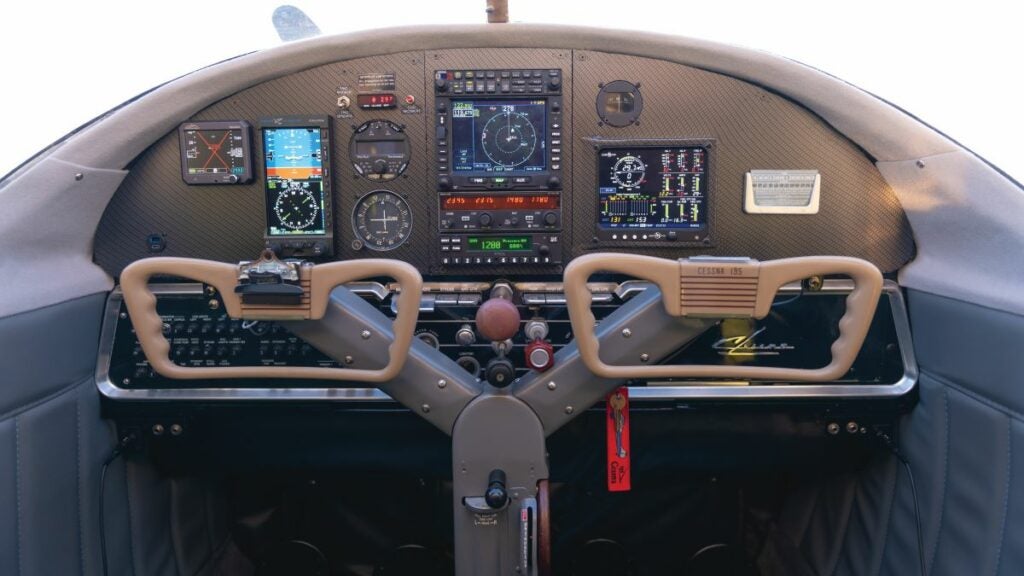
With a maximum gross weight of 3,350 pounds and 1,000 pounds worth of useful load, the 195 can easily carry a pilot and up to four passengers at a 130-to-145-knot cruise speed at 13 to 16 gph. Other STCs for the model include Cleveland brakes, a locking tailwheel, Jasco alternator, and an updated cabin heater, as well as all manner of modern avionics.
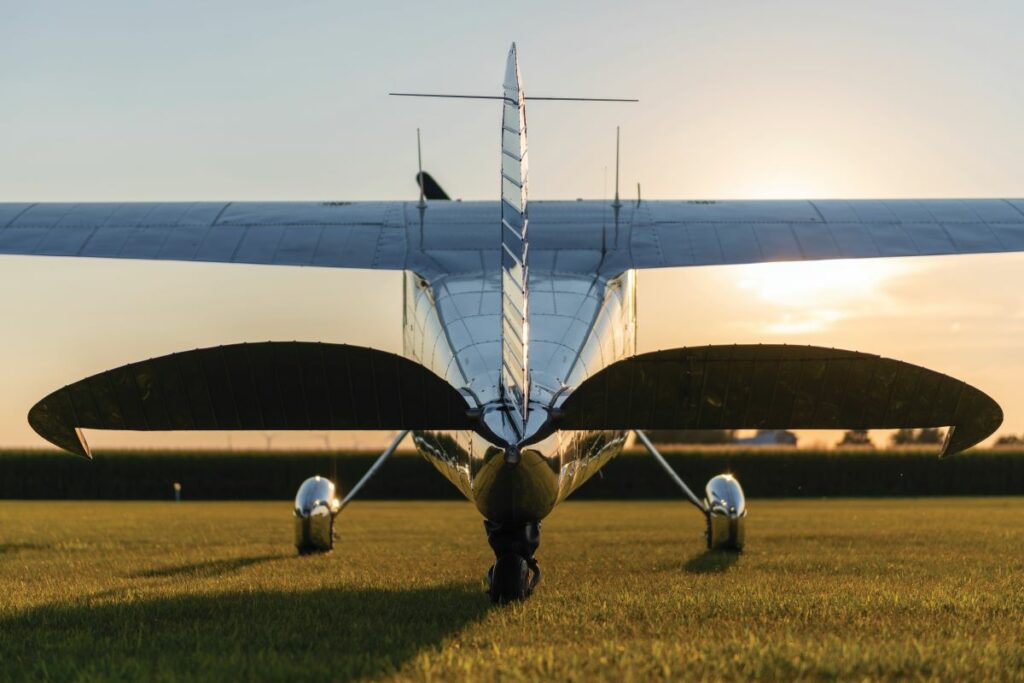
Market Snapshot
With such a loyal following, and a supply subject to the inevitable sadness of model attrition over the course of 75 years, only a handful of 195s make it onto the market each annum. During our brief survey, just four or five examples became available on various aviation marketplace sites.
However, 195 owner Dave Kalina offers a helpful suggestion for potential buyers: Join the 195 community before you start looking. Most of the transactions he’s aware of in the past few years have taken place between seller and buyer without the airplane ever being listed on a brokerage site like AircraftForSale.com. Word of mouth and fellowship in the type organization—the International Cessna 195 Club, the owner’s group of note for the series—tracks most of the good ones before they ever make it into the classifieds.
Current sources of owner support include Jeff Pear-son’s Heritage Aero in California, which focuses on fire-wall forward services, and Air Repair with Pete Jonesin Mississippi, which owns the type certificate for theJacobs engine, and therefore, can produce parts and conduct all manner of overhauls on the powerplant. Along with the turbocharged 350 hp Jacobs, Air Repair installs a Hamilton-Standard or three-blade Hartzell prop as part of its conversion.
Two past sources of 195 parts, maintenance, and support are now out of the picture or changing hands. Barron Aviation in Missouri once specialized in restorations of the type, but it’s shifted focus to the Grumman Albatross—another classic.
Fortunately, the 195 Factory, now operated by Sam Barth, will live beyond founder Bill Milton’s retirement—the transition to new ownership has allowed it to continue to serve the model’s owner base.
The only recent airworthiness directive is on the main cabin heater. According to Coyle Schwab—former president of the International Cessna 195 Club—alternatives are available or the heater can simply be removed. Other updates include replacement of the magnesium aileron brackets for aluminum ones. Cracking and deterioration of the magnesium brackets render the airplane unsafe, so make sure this important switch is made. Also, a good pre-buy inspection—by an A&P familiar with the model—checks the toilet-seat-shaped bulkhead in the empennage for cracks, and issues with the doorposts, two common weak areas.
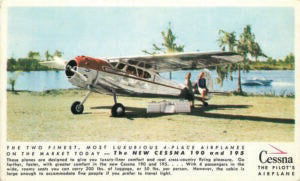
‘Adirondacks Bush Pilot’
A Cessna 195 first graced the cover of FLYING on floats for the September 1953 edition. Inside its pages, the editors told the story of its owner, Helm’s Aero Service at Long Lake, New York , in the heart of the Adirondacks—and the airplane’s versatility.
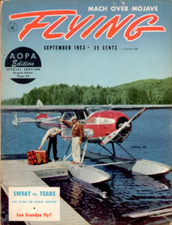
“Using the new Cessna 195 on floats shown on this month’s cover…operator Herb Helms does a brisk air taxi business among the Adirondack lakes, forming an air transportation link from airline stop to lake resorts and isolated fishing and hunting camps.
“The 195 doubles nicely as a cargo carrier, frequently hauling lumber and even boats strapped to the floats. A regular conservation assignment from the State is the aerial planting of fish in the numerous Adirondack lakes. Always on call for emergency medical flights, the ship is an invaluable asset to the whole region.”
Flight Characteristics
That fat wing and the effective “dihedral” caused by its high position on the airframe make for an incredibly stable cruiser in flight, redolent of other monocoque airframe of the vintage, such as the de Havilland Beaver. Though I’d flown the airplane quite a bit upon the occasion of its 60th birthday in 2007, I sought a more recent flight to refresh my memory.
Kalina, shepherd to N195KS, a 1950 195A, graciously offered up his time and airplane to the rendezvous. Through the single right-hand cabin door, we entered the cockpit through the center aisle and arranged ourselves in the cabin—some come with an optional “seaplane” door on the left-hand side. The LC-126s come with a litter door that offers somewhat easier access.
The 195 flies like the stately lady of a certain vintage that she is. After we took off from Johnstown Regional Airport (KJST) in Pennsylvania, Kalina gave me the controls so I could take her through a series of maneuvers, including slow flight, steep turns, lazy eights, Dutch rolls, and chandelles.
The 195 has an option for a unique landing gear system, even considering it’s a conventional gear arrangement to begin with. Goodyear designed a “crosswind” gear mechanism for the model intended to help correct for side loads upon landing by allowing the wheels to pivot up to 15 degrees. For those pilots not accustomed to getting this help, versions of the 195 with the crosswind gear installed can take some getting used to—and it does make taxiing a little more challenging. The option can be removed, and buyers will find both present on models currently on the market.
Overall, with its gear being spring-actuated, the 195 requires good sink-rate control on landing because of its relatively heavy weight—a 3,350-pound maximum gross weight in the normal category—especially on pavement, and the tendency to keep a ground loop going once the point of no return passes. Many owners seek out grass for that reason. However, with good slow-speed handling, other elements of the landing regime are manageable—you just need to stay alert.
Ownership
Through the model’s 75 years of history, a long trail of contented owners have cared for the 195 series. We asked two of those pilots to share their experience.
Coyle Schwab
“Why would anyone want one of these?” says Schwab, rhetorically—he’s had a 1948 195, N3457V, for more than 36 years. “I bought my 1948 model in 1986—so long ago that I don’t really remember exactly what set me on the path to a 195,” he continues. “I’ve always loved the airplane’s looks, so I probably rationalized everything else to just make it happen.
“At the time I purchased the airplane, I didn’t have a pre-buy assessment by a qualified 195 mechanic. I should have. Fortunately, I dodged a bullet with no big surprises. Over the years, I’ve seen new owners who didn’t fare as well. My unambiguous advice is ‘get one done by a person who really knows the type!’
“Perhaps making up for my poor mechanical judgment, I made better choices for training. The logistics of transitioning under the watchful eyes of an experienced 195 instructor can be a challenge, but believe me, it’s important. I had a few years and hundreds of hours in my Cessna 140, so it was tempting to shortcut this step. But there were some real differences. The ‘new’ plane was heavier and the visibility worse. An experienced 195 instructor prepped me for these changes and helped me safely feel my way through the critical first hours. Even 36 years later, I can recall my initial intimidation. After some time, the plane and I became friends and I now recognize the big taildragger as an honest airplane. The pilot has to pay attention at all times, though, or it will bite.
“Maintenance costs are comparable with modern single-engine, fixed-gear airplanes. Cessna’s support is minimal, but a cadre of third-party suppliers for the airframe, engines, and accessories compensates pretty well. There’s always a risk that the picture could change, but I’ve been able to keep my plane flying for nearly four decades without too much fuss. Routine maintenance items are no problem, and the airplane, in general, is quite reliable. I will confess to an occasional chase to find some unusual parts, though. If 99 percent availability at any price is important, the 195 may not be the best choice; sometimes you just have to wait.
“So, 36 years later, how good a choice did I make? I’ll admit that thoughts of trading up to something newer have entered my mind from time to time. But when the lust subsides, I’ve always returned to my Businessliner—it simply represents a reasonable compromise that fits my mission, or more accurately, my personality. It looks as lovely as it did all those years ago (sadly, I don’t). It’s a decent airplane—when I had a young family, it was good transportation for all of us. Now that it’s just two people, it’s still economical enough to fly on medium trips, in a way keeping the family in touch. It’s not as sexy as the most exotic vintage planes, but it’s not as expensive either. Since it’s all metal, I’m not reluctant to leave it on the ramp on a trip if a hangar isn’t available.”
Chris Thomsen
Owner-pilot Chris Thomsen acquired his 195 about 10 years ago. He’s the current chairman of the International Cessna 195 Club, and the proud caretaker for N4331N, a 1947 195 dressed in a stylish cream and bronze paint scheme.
“I came to a Cessna 195 by need—a need for seats for my growing family, a need for an airplane of size, load, and range, a need for something cool and something old,” Thomsen tells FLYING. “It fit the bill perfectly, but I still had no real knowledge of them. I started my education on ‘Interstate 195’ at EAA AirVenture—the rows of 195s that park at the same spot each year in Vintage. There, I found the type club (International Cessna 195 Club), and some very welcoming people of all ages and backgrounds. Better yet, I found an airplane that everyone falls instantly in love with, myself included. Two months [after that first experience], I was in the left seat.
“I had to grow into the airplane, not having any tailwheel time or knowledge of its operating characteristics, something that is not only challenging but perhaps ill-advised. Getting a good pre-buy and flight checkout in the airplane is critical, by someone who specializes in them, not a casual couple laps around the pattern with the old owner or a visit with the local A&P. Fortunately, some of those first people I met in Oshkosh were there to help guide me with pre-purchase, insurance, and checkout. Two months later, I had my plane, and I named her Bonnie.
“Over the past nine-plus years, I’ve done many upgrades and maintenance; most was expected, but some wasn’t. Thankfully, we are well supported by many organizations, as well as my local A&P. We’ve flown Bonnie all over the country together, and she’s never left us stranded. I can only hope to keep history alive for years to come, and many more adventures.”
A Platinum Celebration
The 51st Annual International Cessna 195 Convention was held in Joliet, Illinois (KJOT), September 7 through 11. It was a people-focused weekend for the 195 families celebrating 75 years of the Cessna Businessliner, with 32 Cessna 195s in attendance. In addition, there were 22 states represented, along with two airplanes from Canada.
To fire up the convention, on Wednesday, chairman Chris Thomsen hosted a welcome barbecue at his home in Meadow Creek Airpark (2IL9). This was the first stop for many on their way to KJOT.

The next day, about 25 of the 195s participated in a fly-out to Brodhead (C37) to kick off the Midwest Antique Airplane Club (MAAC) grassroots fly-in. The spectacular Kelch Aviation Museum was enjoyed by many during their visit.
On Friday, club members attended a maintenance seminar. Many of them said they were impressed by the professionalism of the training. It consisted of three hands-on, 45-minute sessions that participants cycled through.
First, Jeff Pearson offered a workshop on prop-seal installation. Then, at the same time, Caleb Curry of Radial Engines did a session on ignition inspection and timing on the magneto and distributor. Finally, Darren Butcher led a discussion on “hot topics,” including landing lights, tailwheels, new gear legs, flyaway kit contents, and prop servicing. Three of the attendees volunteered their airplanes. They were literally taken apart—and luckily put back together.
The final day featured a fly-out to the beautiful fly-in community of Poplar Grove (C77). Fourteen Cessna 195s made the journey and their pilots were treated to hangar tours, engine shop tours at Poplar Grove Airmotive, the Vintage Wings and Wheel Museum, and enjoyed a taco lunch at the pavilion, hosted by Jim and Val Slocum. The Thomas family—owners and operators of the airport—were gracious hosts. —Leonardo Correa Luna
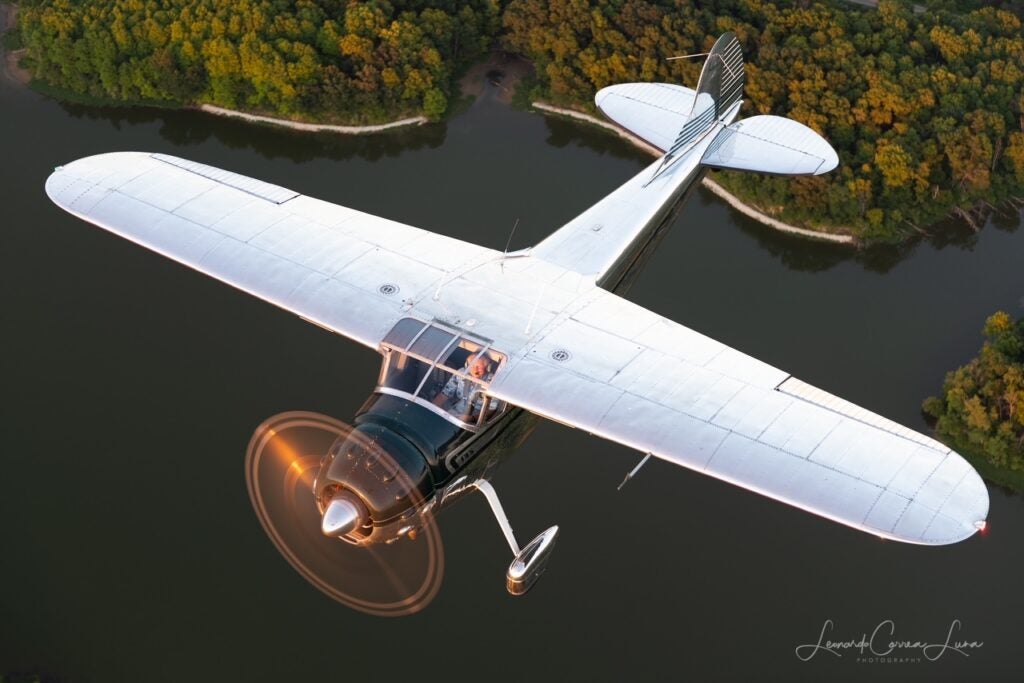
Cessna 195
Price: $135,000 to $225,000
Powerplant (original): 300 HP Jacobs R755-A2
Normal Cruise Speed: 130-145 knots
Endurance: 5-plus hours
Baggage Capacity: 220 lb. standard
Takeoff Distance (over a 50 ft. obs.): 1,500 ft.
Landing Distance (over a 50 ft. obs.): 1,495 ft.
Insurance Cost: Moderate
Annual Inspection Cost: Moderate
Recurring ADs: Few
Parts Availability: Good (type club, third party, and OEM)
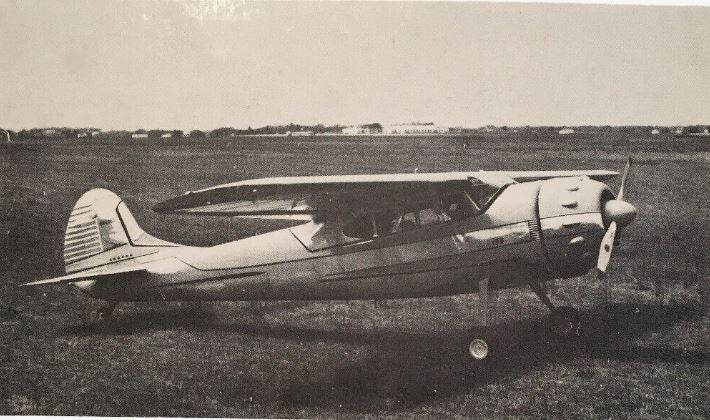
Milestones in the Life of the Businessliner
The Cessna 195, with its distinctive bumped cowl and teardrop-shaped wheel pants , harkens back to a time when men wore slacks with cuffs and white shirts to work and women dressed up to go grocery shopping. There are those who say the aircraft, which had a relatively short production run, was a classic from the beginning. The airplane had some significant milestones.
- 1945 / The first prototype 195 flies. With the Cessna 190 (which flew in 1944), it’s Cessna’s only post-war radial engine aircraft
- 1947 / The 195 is certified by the Civil Aeronautics Authority, the precursor to the FAA. Because the aircraft is expensive compared to its contemporaries, it is marketed as the Businessliner, the message being that the person who owns this airplane has places to go and people to see—and needs to do this efficiently.
- 1949 / The U.S. Air Force acquired 15 Cessna 195s and militarized them by installing specialized radio equipment, an escape hatch, and interior fittings. The military 195s get a utilitarian paint job and a new designation: LC-126, and later the U-20. The aircraft is used as a light transport and utility aircraft. Eventually, variants A, B, and C are made for the U.S. Army, National Guard, and U.S. Air Force.
- 1950 / The LC-126s are delivered with interchangeable floats and skis for more utility.
- 1954 / Cessna terminates the production run of 195s. The aircraft manufacturer is working on a tricycle gear design—the Cessna 172.
- 1969 / Dwight Ewing, a California rancher and realtor who bought a Cessna 195 to take his children around the country, formed the Cessna 195 Club. One of the first type clubs created, it started out as a social organization with lots of fly-ins and a quarterly newsletter. Eventually, it evolved into a clearing house for maintenance tips and parts sourcing, and added “International” to its name.
- 2000s / The International Cessna 195 Club expands online. The growing accessibility of personal computers and the internet makes it easier for people to join and take advantage of the resources and information offered through the Cessna 195 type club. Instead of phone calls and exchanging Polaroid photographs to solve problems related to part sourcing and technical matters, collaboration takes place by email and smartphone.
- 2006 / Jack Pelton, then president and CEO of Cessna Aircraft Company, acquired N2196C, formerly owned and flown by Dwane Wallace, who was president of Cessna when the 195 was born.
- 2022 / The Cessna 190/195 series celebrated its 75th anniversary with a major fly-in gathering at Joliet, Illinois (KJOT). Thirty-two Cessna 195s and their pilots attended the event.
This article was originally published in the December 2022/January 2023 Issue 933 of FLYING.



